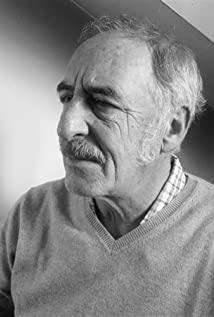EDITH PIAF, formerly known as EDITH GASSION, was born in Paris on December 19, 1915. His father Louis-Alphonse Gassion is a street juggler, and his mother Anita Maillard is a singing singer whose stage name is Line Marsa. ANITA is a descendant of Kabyrian descent (a ethnic group in North Africa in Algeria, also known as Berber, active on the Ibilisi Peninsula and many homeless people). During the First World War, his father was in the army and his mother was doing street art. Having no time to take care of her daughter, EDITH had to live with her grandmother Aïcha in Normandy when she was young. In the countryside, she spent a few happy years of happiness, the only happy time in her childhood! . After the war, her father took her back to her side. There was no happiness in her childhood. In order to make a living, their grass stage team wandered all over France. Hardship), poor EDITH, who has experienced the hardships of life early, there will be no idlers in the troupe. Before his father takes the stage, the little EDITH must prepare his top hat. . .
It may be inherited from the family. She was born with a good voice. As she got older, she would also appear in a few small tunes. Gradually, she officially became a member of the troupe. At the age of 15, she was determined to leave her father and go to Paris alone. In 1932, she lived with Louis Dupon (stage name P'tit Louis), who was also a wandering artist, and had a daughter, Marcelle, a year later. Sadly, two years later, the girl died of meningitis. Edith continued to sing in Belleville, Pigalle and other neighborhoods, until one day, the owner of Louis Leplée, one of Paris’s most elegant bars, le Gerny's (located on Champs-Elysées!) accidentally heard this young girl singing, and was immediately caught by this petite girl. The girl’s voice was fascinated, and he immediately signed her and changed her stage name to Môme Piaf (notch in Paris, in idiom, this means “bird”). This stage name, matched with her height of 1M47, really has a pitiful feeling. It is such a bird from a miserable family who, with her graceful singing voice, conquered all of Paris and France between the two wars, and almost immediately reached the pinnacle of honor. . .
She spent a few days happily with Louis Leplée. Louis loved her very much, and in 36 years recorded her first record Les Mômes de la cloche (meaning "country girl" in the native language). Unfortunately, Piaf is always so miserable: In April of the same year, Leplée was murdered in his own home! Because of her close relationship with him, PIAF was interrogated by the police, and the media tabloids hyped up this "legendary". However, with the help of one of her admirers, Raymond Asso, a well-known adventurer and honorary recipient, Next, she quickly got rid of the relationship and left le Gerny's. Raymond Asso was very considerate to her. It should be said that under the guidance of Raymond Asso, PIAF slowly got rid of the rusticity of country girls and the tackiness of the public class, and finally became the EDITH PIAF we are familiar with today. With the assistance of female composer Marguerite Monnot, Raymond Asso presented PIAF with a song Mon légionnaire (Serge GAINSBOURG also adapted this song for PIAF in the future), which later became PIAF's first reserved song. In 37 years, Raymond Asso successfully persuaded the most famous club in Paris at that time, l'ABC signed a contract with PIAF, so the 23-year-old Môme Piaf changed his stage name to Edith Piaf again. Under the strong light, she had a confused expression, as if helpless, her hair was bleak, her lips were red, and her arms drooped along the black sweater that was playing. Can this former country girl, the bird who used to be full of wind and rain, succeed? And when she opened her mouth to sing, Paris became drunk. . .
In 40 years, she cohabited with the theater actor Paul Meurisse (about 2 years), the latter was elegant and yet modest, and he taught PIAF a lot of things, especially how to deal with social problems appropriately. Playwright Jean Cocteau wrote a play Le bel indifférent for them both. With the help of her husband and Jean Cocteau, PIAF's performance was a great success. This play also inspired her interest in drama and showed her Talent for acting. Subsequently, the two couples starred in Georges Lacombe's film Montmartre sur scène. During this shooting process, PIAF formed a special friendship with film music author Henri Contet, who later became her main songwriter. During World War II, PIAF rebelled against the occupiers in its own way: ignoring the warnings of the Germans, insisting on cooperating and performing with Jewish musicians. At this time, she is very mature, not only refers to her personality, but also her artistic expression, her ability to coordinate with all aspects of society, has been able to control her freely. She cleverly dealt with various forces, using her experience and achievements to realize her wishes. Everything is as her wish, and there is even love. In 44, YVES MONTAND, a hairy boy who first arrived in Paris, broke into her life. When she was over 30, she fell in love with him desperately and became the goddess of protection and guide for this country boy. Maybe her childhood life experience similar to YVES gave her both a lover's love for YVES and an emotion that is close to maternal love. In order to introduce her production team to YVES, her imperial composer Henri Contet wrote YVES's earliest famous songs Battling Joe and Luna park for the latter. She introduced the young man into the social world step by step, instructed him to read and socialize, so that he quickly integrated into Paris. In 45 years, she co-starred with Montand in the film Etoile sans lumière (directed by Marcel Blistène). 45 years ago, PIAF had only one influential song written by herself, and that was La vie en Rose, (composed by Louisuguy). At first, the people around her thought that this song was too advanced and would not be popular, but as a result, today this song has almost become synonymous with CHANSON. Unfortunately, because SACEM (Association of Lyricists and Song Writers) does not recognize PIAF’s writing ability, the author of this song was originally signed by PIAF and Louise --- of course, PIAF has created more than 80 songs in his lifetime. The song, that's a story. In 46 years, PIAF noticed the young singer-songwriter group COMPAGNONS DE LA CHANSON and admired their talents. For the sake of herself and YVES, she managed to recruit them to the house, writing and composing songs exclusively for her and YVES. With her promotion , Released an album Les trois cloches, YVES gained 1,000,000 sales and won an extremely brilliant achievement. But for some reason, this year, she was separated from YVES inexplicably. Maybe she foresaw the limitless future of YVES, so she chose to leave quietly. . .
Perhaps for relaxation, she went to the United States for the first concert in 47 years and brought COMPAGNONS DE LA CHANSON with her. This trip to the New World is really a challenge for PIAF, the singing girl who grew up on the streets of Belleville: The first few performances at the Playhouse in New York can only be regarded as failures. The Yankees don’t understand this woman. Of course, language is also a barrier to understanding. After one of New York's largest daily newspapers criticized her performance very well, she decided to stay, but she moved the venue to Manhattan, in the most famous pub-Versailles. This time, it was a big success. A week later, she decided to extend the performance to 4 months, and in the following years, she will perform here regularly. In addition to opening up the New World market, the trip to New York had two gains: becoming a lifelong friend with the actor and singer Marlène Dietrich, and falling in love with the famous boxer Marcel Cerdan. This love between the boxing champion and the queen of the song Stories became a hot topic in newspapers in the 47s. Piaf and Cerdan’s happiness is fulfilling. The different fields they are engaged in make their relationship no need to worry about quarreling. She and Marguerite Monnot wrote the famous CHANSON for her lover: L'hymne à l'amour, her Another immortal classic. Doom seems to be always reluctant to stay away from this unfortunate and successful woman. On October 28, 49, Marcel Cerdan died suddenly due to an air crash, which turned this legend into a tragedy. The huge blow made PIAF never truly freed from it in his lifetime. . . .
PIAF has thus become a mysticisme and even a spiritisme. The man she loves is always taken away from her by mysterious accidents. . . However, this strong woman did not stop working. In 50 years, she returned to Paris and continued to perform in Pleyel. During this period, the young songwriter CHARLES AZNAVOUR became the "homme-à-tout-faire" (homme-à-tout-faire) by her side. His secretary, driver, and confident, in fact, since 45 years, she began to use her influence to help CHARLES, but she did not help CHARLES like YVES or Les Compagnons de la Chanson. However, the loyal Aznavour still remembers her and wrote her excellent songs such as Jézébel and Plus bleu que tes yeux. In 1951, PIAF once again found a new protector, the young American dancer, singer Eddie Constantine. This story lasted only 7 months, and the mysterious incident happened again: this time it was herself, she met continuously There were two traffic accidents, the second of which almost killed her. During the treatment, she became addicted to drugs and has never been able to struggle from this terrible hobby ever since. . .
The continuous blows made her addicted to drugs and alcohol and severely damaged her body. . . She seemed to want to change her destiny through marriage. In July 1952, she held the first formal wedding she had always dreamed of with singer Jacques Pills. After marriage, both went to the United States to perform. When she sang in the new-yorkais pub, she performed. Jacques Pills wrote several works for her. That was her 5th time to perform in the United States. Of course, Le Versailles, which opened the door to the new world, is still a must go. There, she performed her husband and newcomer GIBERT BECAUD for She wrote the new song Je t'ai dans la peau, another classic of her in the future. This year, she experienced several adverse drug reactions, and her physical condition was very bad, but also in this year, she reached the peak of her personal artistic career. Concerts and radio shows gave people great surprises. As she was touring everywhere, her poor health almost dragged her down. In 53-54, she had to cultivate behind closed doors. However, after receiving an invitation to the Olympia Theater (the holy place for all singers) in 55 years, PIAF once again radiated amazing passion and energy, regardless of the debilitating body, and put into the preparations for the performance. This performance was a great success and inspired her to continue her acting career. She decided to make another tour across the United States. The starting point of this performance was the temple of musicians in Paris; Olympia, the end, was the sanctuary of classical music in New York. Hall-Carnegie Hall (Carnegie Hall), her reputation reached its peak, an undisputed international superstar. After returning to Paris, she performed in Olympia for 2 consecutive months. The repertoire included L'Homme à la moto and Les Amants d'un jour, which were sung from English. She shuttled back and forth in the Atlantic Ocean, performed non-stop in New York, Paris, and South America, completely forgetting the physical damage caused by drugs and alcohol. . .
At the Olympia concert again in 58, she performed her other most important work, Mon manège à moi. After that, she met the singer and songwriter GEORGES MOUSTAKI, the latter and Marguerite Monnot presented her the song Milord. As a result, she and GEORGES also had an accident. In September of '58, she and GEORGES met again. Caused a serious traffic accident. . . Later, at the concert in New York, PIAF's bad condition caused her to fall on the stage. It seems that there will not be much to come. She rejected the suggestions of friends and doctors and insisted on the 60-year Olympia concert as usual. This time, she released a new song Non je ne regrette rien (written by Charles Dumont), which was brought to her by the performance. Continuous glory, but the damage to the body is irreparable. . .
In the summer of 61, PIAF met the last man in her life, Theophanis Lamboukas. She called him Sarapo (I love you in Greek). This Greek singer accompanied her on the last journey of her life. . .
In July of this year, she accepted the Lifetime Achievement Award from'Académie Charles Cros. In September of 62, she performed for the last time in Olympia. On September 25th, at the Eiffel Tower, she sang Le Jour le plus long for all of Paris. Her brilliance was unparalleled. On October 9, she married Theophanis Lamboukas, her Theo Sarapo, in accordance with the orthodox canon. In January 1963, the couple released her last famous song, A quoi ça sert l'amour? (an ominous name---"What's the use of love?") In April, this unyielding woman finally fell. , The last years were spent on the coast near Ghana in the south. On October 11, 63, she passed away on the same day as her friend, playwright Jean Cocteau. The funeral was held in Paris on October 14th. Tens of thousands of fans walked to the Père Lachaise cemetery (Père Lachaise). To this day, she is still filled with flowers from worshipers every day. . .
In 1996, a concert called Piaf je t'aime was held in Paris, and many of her songs have been deeply integrated into French life. . .
In 1997, Charles Aznavour used contemporary technology to produce the classic Plus bleu que tes yeux of his and her dead voice, setting off a wave of covering her famous songs. In fact, since she left us, countless international stars have sang her works, such as Louis Armstrong, Joséphine Baker, Marlene Dietrich, Liza Minnell, SERGE GAINSBOURG, JOHNNY HALLYDAY. . . On October 11, 2003, on the occasion of the 40th anniversary of her death, the mayor of Paris, Bertrand Delanoë, held an unveiling ceremony for one of her statues. The location of the statue was just a few meters away from the Tenon Hospital. There, in 1915, EDITH Place of birth. . .
View more about La Vie En Rose reviews











